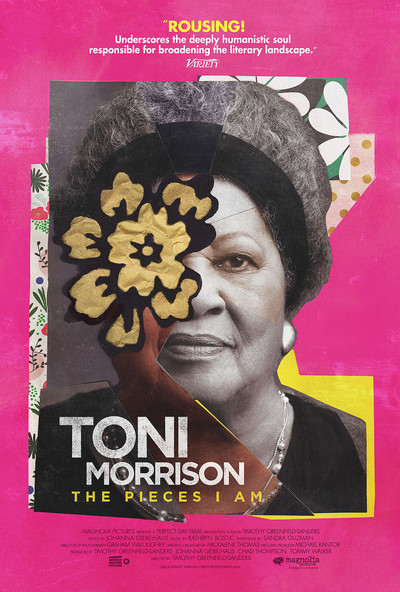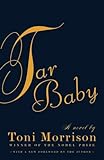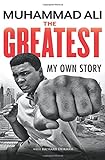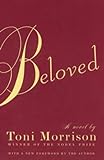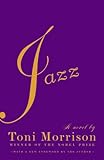A new literary documentary, Toni Morrison: The Pieces I Am, which chronicles the life and career of the prolific author (and, less famously, influential book editor), hit theaters last week.
The film touches on a number of milestones in Morrison’s wide-ranging career: fighting for a salary equivalent to those of her male colleagues at publisher L.W. Singer; editing, among others, Angela Davis, Huey P. Newton, Quincy Troupe, and Muhammad Ali; and the backlash from the white male publishing and literary zeitgeist following her Nobel Prize in Literature win. The Millions spoke with the film’s director, Timothy Greenfield-Sanders, about what he hopes his film will achieve.
The Millions: How did this documentary come about?
Timothy Greenfield-Sanders: I first met Toni Morrison in 1981 when she sat for a portrait in my East Village studio. Tar Baby was just out and I shot her for a cover story of the Soho News. Our friendship continued, and over the years I photographed her for book jackets and press images. As the years passed, I split my time between portraiture and documentary filmmaking. It was a 2006 conversation with Toni in my kitchen that sparked the idea for my film series on identity. Toni was the first to sit for HBO’s The Black List, which ultimately featured 50 leading African Americans. It became clear to me then that Toni deserved her own feature documentary.
TM: Morrison is known for being extraordinarily perceptive. How did she make for an interview subject?
TGS: The key to any great interview is trust. Toni trusted me to make this film and, consequently, was very open about her life. Additionally, Toni is a master storyteller, and the camera loves her. Her warmth and wisdom come through…and she is blessed with a magnificent, mesmerizing voice. As filmmakers, you could not ask for anything more.
TM: How did you strike a balance between portraying Morrison’s family life, her publishing career, and her writing career?
TGS: We wanted audiences to see more than just Toni Morrison the Nobel laureate. She had a huge career at Random House, where she edited bestsellers like Muhammad Ali’s The Greatest: My Own Story and published voices that might have been lost without her support: Toni Cade Bambara, Gayl Jones, Lucille Clifton. She “cracked the ivory tower” of the publishing world and did all of this while she was writing her own incredible novels, teaching college, and raising two boys as a single mother. We wanted to show all of Toni’s hats and how her life of books had all of these lesser-known facets among her many achievements.
TM: How did you come to choose the other voices from the publishing and writing worlds that appear in the documentary? How did Hilton Als, Oprah Winfrey, Angela Davis, Robert Gottlieb, Walter Mosley, Russell Banks, Fran Lebowitz, and Sonia Sanchez get involved?
TGS: We started with a long list of names, and a very sharp pencil to cross most of them off! We became very specific about what each interviewee would bring to the narrative. For example, Oprah, the Book Club and Beloved; Gottlieb, his experience as her editor; Lebowitz, her humor and long friendship with Toni, etc. I didn’t want too many other voices, so there would be plenty of room for Toni. Visually, my idea was to shoot Toni direct-to-camera and the other interviewees looking off camera. This way, Toni talks directly to us and the others talk about her. It was a risky decision because once you go down that road, you’re stuck with the format. It did work out beautifully.
TM: Writing is not an activity that’s visually interesting. How did you manage to tell Morrison’s story on film, considering this challenge?
TGS: There are more than 600 archival images and video clips in the film. Our editor, Johanna Giebelhaus, was also the researcher, and she pulled remarkable material from the Library of Congress, the National Archives, Howard University, archives in Toni’s hometown in Ohio, the Random House archive, and Toni’s personal archive at Princeton. Toni’s old interviews with Charlie Rose, Dick Cavett, and Bill Moyers were also important elements. Additionally, we incorporated stunning fine art paintings from a wide range of African American artists such as Kara Walker, Kerry James Marshall, Rashid Johnson, Lorna Simpson, Jacob Lawrence, and Faith Ringgold, to name a few. These artworks help illustrate the themes Toni explores in her writing. Mickalene Thomas came onboard and used my images of Toni to create a spectacular opening credit montage.
TM: Were there any interesting publishing tidbits you chose to leave out of the film? If so, can you share one?
TGS: The one person we interviewed, who sadly didn’t make the final cut, was Peter Sellars. Toni and Peter worked together at Princeton in the atelier program that Toni created and had many debates about Shakespeare. Peter challenged Toni to write an answer to Othello and Toni’s play Desdemona, which focused on the female characters, was the result. We edited a riveting discussion of Toni and Peter’s artistic collaboration, but ultimately didn’t have room for it. Hopefully, this will be in the DVD extras. Toni’s thoughts on writing about sex for her book Jazz was also cut for time. Fascinating stuff!
TM: In what ways do you think this film, through telling Morrison’s life, gets at a fundamental truth about American publishing and literature?
TGS: An important section of the film explores the mostly white and predominately male world of 60’s and 70’s publishing. Toni describes how she navigated that. Her own writing and her publishing had profound impact, and fundamentally changed the canon by introducing African-American writers to a large audience. We also show how she brought to publishing her experience as a teacher, which gave her a critical insight into what literature and books were missing from the “catalogue.” It was a heady time, and while people were demonstrating in the streets, Toni’s mission as an editor was to create a permanent record of the ideas percolating outside—most importantly about race and the American experience.
TM: What do you hope audiences will take away from your film?
TGS: Toni Morrison: The Pieces I Am presents Toni as the person that I know…and I think one that her other friends will recognize too. That’s a rare achievement for a documentary. Audiences will see her as the brilliant, strong woman that she is. They will also love her more than ever. I also hope the film introduces Toni and her writing to a new generation that might not have read her books.
This piece was produced in partnership with Publishers Weekly and also appeared on publishersweekly.com.
